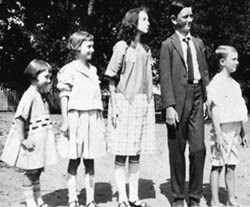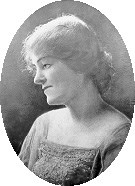
Photo by Art McCrea




LBJ Library Photo by Austin American Statesman In February 1937, Lyndon Johnson returned home from Austin to seek the advice of his father - should he run for Congress? It was the first week of March, 1937, when Lyndon Johnson stood on the porch of his boyhood home to announce his candidacy for the U.S. House of Representatives for the Tenth District of the State of Texas. So began a career in public service that spanned more than three decades, culminated in the presidency of the United States, and ushered in landmark legislation such as Medicare, Head Start, the Civil Rights Act of 1964, and forty-three national park authorizations or additions. As a boy he learned the value of education, and his administration passed more than sixty education bills - a fitting tribute to his mother. He didn't forget where he came from and worked hard to provide electricity throughout the rural counties that surround Johnson City. All his accomplishments have earned him a respect that is still alive today in the Texas Hill Country. LYNDON JOHNSON'S NATIONAL ELECTORAL OFFICES
A visit to the Boyhood Home is a walk back in time to rural America of the 1920s - a window into the world that nurtured Lyndon Johnson. We welcome you and hope that you enjoy your visit here in Johnson City. HISTORY This Folk Victorian house was built in 1901 by W.C. Russell, sheriff of Blanco County. In 1913, Sam Ealy Johnson, Jr. paid $2,925 for the house and the surrounding 1.75 acres. During the presidential years, the home was used as a community center and public tours were offered. In December of 1969, Congress designated this home as part of Lyndon B. Johnson National Historic Site. The National Park Service has restored the home to its appearance during the mid-1920s, the teenage years of Lyndon B. Johnson. 
THE RESTORATION When the Boyhood Home was given to the National Park Service, it had been altered considerably from how it was when Lyndon Johnson was a boy. To return the home to its 1920s appearance, materials of the same type and age and historic construction and furnishing techniques were used. In 1973, after three years of efforts by historians, architects, carpenters, stonemasons, and many local business people, the restoration was completed and the Boyhood Home was opened to the public. The home is restored for you and all future visitors to enjoy. Please help us protect and preserve it by not touching any furnishings or artifacts. |
Last updated: March 31, 2012
